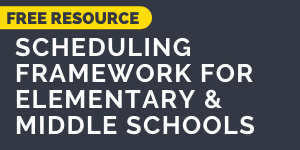The 2021-2022 school year launches in two months and we couldn’t be more excited to welcome our students to a new school year full of fresh opportunities. The reality of COVID learning loss requires us to set a bold and necessary goal: to reverse 100% of COVID-related learning loss by June 2022. To achieve this goal, we have created a K-12 instructional model that we firmly believe will meet the academic and

Staff and Student Wellness
We know that staff and student wellness takes on even greater meaning after the pandemic and the ongoing pursuit for racial justice that received increased national attention this past year. Diversity, equity, and inclusion (DEI) and social emotional learning (SEL) are key drivers of wellness and will be woven into all aspects of the Uncommon instructional model.
- Structure and Student Experience in ELA: In an effort to not only consider the content of our ELA curriculum, but also the structure and student experience, we will reduce our novel list to allow more time with our remaining novels, add multi-modal thematic schema lessons and re-emphasize the essential questions to maximize student voice and analysis.
- STEM Performance Tasks: High school math and science courses will further develop unit performance tasks, providing students robust opportunities to strengthen and deepen key mathematical and scientific practices essential to becoming STEM-informed citizens.
- Expanded High School Course Selection: Our high school program will expand course selection, launching aligned curricula for African American History and Latin American Studies and developing an aligned Spanish for Heritage Speakers course.
- High School Readiness: Uncommon 7th and 8th grade students will participate in a Friday High School Readiness program that focuses on a wide-range of topics including time and task management, goal-setting, teamwork, financial literacy, and student voice and advocacy.
- Elementary School Independent Reading Book Club: To further invest students in their nightly reading, every Friday morning will include a 30 minute book club meeting where students who have engaged with the same text all week will come together to connect on and discuss their reading with a small group of peers.
Prioritize Reading Instruction in K-6
A student’s ability to read and comprehend underpins their ability to access and excel in all other content areas. As shared in our Summer Success Program blog post, our data tells us between 25% and 42% of our K-4 students are Well Below Benchmark (WBB) meaning they are unlikely to achieve subsequent reading goals without receiving additional, targeted instructional support. Our preliminary 5th grade reading data shows similar trends. As a result, we are prioritizing both on grade level reading instruction and student reading level instruction.
- On grade level reading instruction: Reading Comprehension, Close Reading, Vocabulary, Writing, and Novel Study as well as History and Science.
- Student reading level instruction: Guided Reading grounded in dynamic groupings determined by STEP or mCLASS data.
Small Group Instruction Focused on Accelerating Student Learning
Every student will return to us in the next school year in a variety of places—some below grade level, some on grade level, and some above grade level. We have strategically embedded small group instruction into our K-4 and 5-8 instructional models in order to meet every student where they are in their learning while guaranteeing engagement with on grade level content.
- Elementary School Literacy: Maintaining 2 (3rd and 4th grade) or 3 (Kindergarten to 2nd grade) literacy blocks to allow for dynamic, homogenous groupings of readers.
- Middle School Math: A 20-30 minute small group instructional block that targets “just in time” remediation to prepare students for on-grade level learning, additional practice to build mastery, or extension opportunities to go beyond current grade level learnings.

If you’re interested in learning more about how we plan to structure our day, we’re excited to share our scheduling framework with you.
Streamlined Assessment
Assessment and response-to-data will be streamlined to regularly gather data and effectively reteach while maximizing instructional time.
- One Assessment At a Time for K-8 Math and K-8 ELA: To avoid a surplus of overlapping data, a single assessment is being prioritized per assessment window for Math and ELA so that leaders and teachers have a singular focus.
- Progress Monitoring at the School Level: Schools will be empowered to make decisions on how and when to progress monitor to ensure appropriate growth between network supported assessments.
- Integrated Response-to-Data Days in Scope and Sequences: Response-to-Data days (days without new introduction of content) will be proactively scheduled to ensure that teachers can respond to data without having to cut or compress already scheduled content.
Integrated Technology
Now that Uncommon has shifted to a 1-to-1 Chromebook model, we will continue to leverage this technology to enhance and elevate our curriculum while creating informed digital citizens.
- Technology Skills: Using the Common Core State Standards and state technology standards, we are working to backwards plan all the way through kindergarten to ensure students have the technology skills needed for college and career readiness. For example, we will be increasing our technology lessons during K-4 writing instruction that will support students in publishing their work.
- Zearn: 5th and 6th grade students will use Zearn when not working directly with the teacher during the math small group differentiation block. Zearn can be used for additional practice with previously taught content or as a stretch for students ready to independently engage with new content.
- Amplify Reading: Kindergarten to 6th grade students will engage with Amplify Reading to target specific skills that need additional support as a complement to their literacy blocks.
- Winward Academy: During scheduled SAT preparation blocks, 11th and 12th grade high school students will use Winward Academy, an SAT curriculum and learning platform that can be personalized and customized to respond to student and class needs.
We know these are ambitious goals and initiatives, but we believe the intentionality of the plan paired with the dedication of our teachers and students will lead us to success. We look forward to updating you on our progress–successes, failures, and lessons learned–over the course of the upcoming school year as well as sharing resources as they are created for these initiatives.
If you are interested in digging more deeply into the pillars named above or asking questions that will help with your own planning for the 2021-2022 school year, we encourage you to subscribe to our blog. A subscriber only invitation will be shared for a limited number of attendees to join a virtual opportunity to continue this conversation. We look forward to learning from you, too!
Click below for PDFs of all the resources referenced above:





